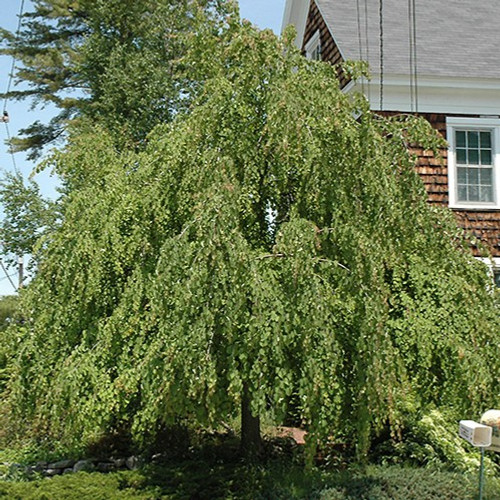| Morus alba 'Pendula' |
USDA Zone: 5-8 |
Weeping Mulberry is primarily valued in the landscape or garden for its highly ornamental weeping form. It has rich green deciduous foliage. The pointy leaves turn yellow in fall. The red fruits are held in clusters in mid summer.
An unusual accent tree with a twisted weeping habit of growth, rather quaint when young but becomes wide-spreading and prominent when mature, best used as a solitary feature; very adaptable to many conditions.
A female tree, Morus alba 'Pendula' bears fruit.
Fruits can be messy and prolific.
Attracts Birds
Common Name: Weeping Mulberry Tree, Fruiting Mulberry Tree
|
Key Feature
|
Light Needs | Landscape Uses |
 |
 |
|
|
|
|
| More About Weeping Mulberry Tree |
| Height: 6-10 ft |
Spread: 10-15 ft |
|
Weeping Mulberry performs well in both full sun and full shade. It is very adaptable to both dry and moist locations, and should do just fine under average home landscape conditions. It is considered to be drought-tolerant, and thus makes an ideal choice for xeriscaping or the moisture-conserving landscape. It is not particular as to soil type or pH, and is able to handle environmental salt. It is highly tolerant of urban pollution and will even thrive in inner city environments. Note that when grown in a container, it may not perform exactly as indicated on the tag - this is to be expected. Also note that when growing plants in outdoor containers and baskets, they may require more frequent waterings than they would in the yard or garden. Be aware that in our climate, most plants cannot be expected to survive the winter if left in containers outdoors, and this plant is no exception. NOTE: Some flowers and plants may be harmful or poisonous to people or pets if touched or ingested. If you require more information before placing an order, please let us know in advance. |









